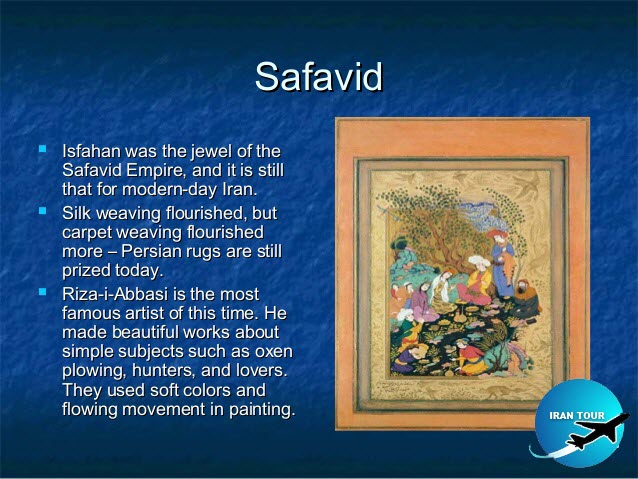Copyright 2020 - 2021 irantour.tours all right reserved
Designed by Behsazanhost
Safavid Dynasty
Safavid Dynasty (1501 - 1736)
The Safavid government, which is to be seen as a new system in the Iranian political and religious system, has led to Iran's independence from the Shiite religion as an official religion and a centralized government. In addition, the creation of the new dynasty encouraged Iranian artists to display their culture, architecture, and fine arts. In the meantime, exchanges have developed with the beginning of diplomatic relations with Europe and neighboring countries. Shah Abbas and his successors built many caravansaries in the country to promote trade and made the roads safer. The small Iranian dynasties that emerged after the Arab conquest did not normally benefit from national unity, and a dynasty often governed several separate territories at the same time.
 |
Shah Esmaeel founded the Safavid dynasty in 1500 AD and spent most of his time fighting hostile tribes in eastern and western Iran. Shah Abbas the Great set up a very strong army and equipped it with modern weapons. This allowed him to defeat all Iranian enemies, including the Ottoman Turks, and to expel the Portuguese aggressors from the Persian Gulf. In addition to his military adventures, Shah Abbas built magnificent places, mosques, and bridges and spent his entire life embellishing Isfahan, the capital of the Safavid Empire. In the end, the Safavid dynasty weakened and deteriorated by resorting to luxury and court intrigue. Afghans, neighbors of Iran in the east, have taken advantage of the weakness and shyness of the last Safavid king, Shah Sultan Hussein. They attacked the Iranian capital and destroyed the Safavid dynasty. A Journey to the Safavid capitals
- Details
- Category: IRAN Blog